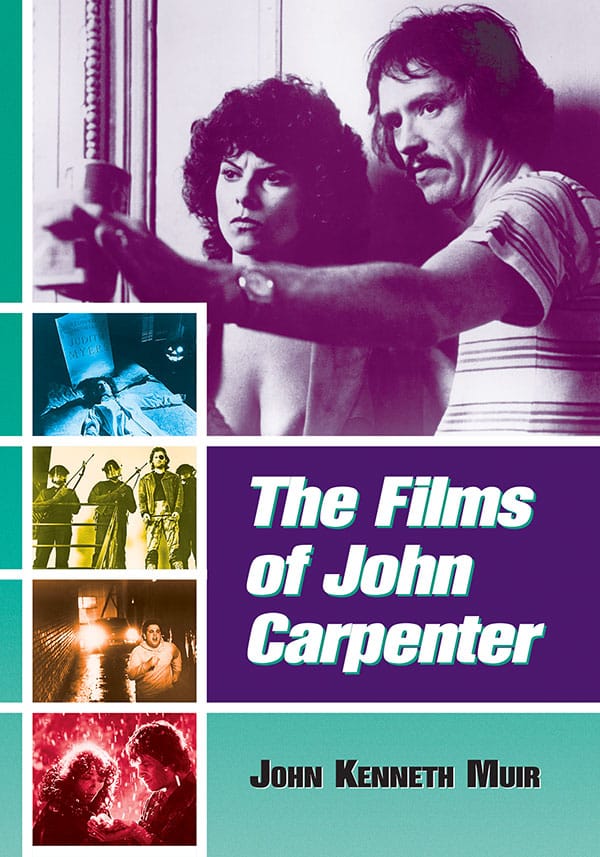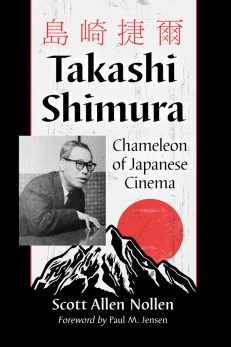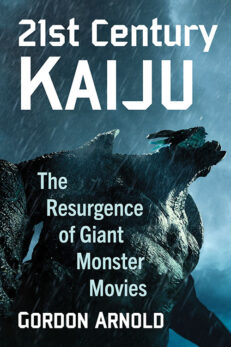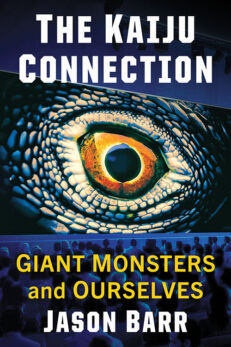Acknowledgments vii
Introduction 1
I: A History and Overview of John Carpenter’s Career 5
II: The Films of John Carpenter 53
III: Films Written and Produced by John Carpenter 195
IV: John Carpenter on Television 231
V: Epilogue: We Are Transmitting from the Year 1999… 239
Appendix A: Some Directing Opportunities John Carpenter has Turned Down 241
Appendix B: Slasher Films that Followed John Carpenter’s Halloween 242
Appendix C: The John Carpenter Repertory Company 244
Appendix D: Recurring Characters in the Films of John Carpenter 246
Appendix E: Rating John Carpenter 248
Notes 251
Bibliography 332
Index 341
Review Fix chats with author John Kenneth Muir, who lets us know why his book, The Films Of John Carpenter, is a special one.
Review Fix: How did this project start for you?
John Kenneth Muir: The Films of John Carpenter began with my love and admiration for the director’s work. I had seen some success with Wes Craven: The Art of Horror (1998), and I knew that I wanted to write about J.C. next. I was fascinated, in particular by the apparent audience disconnect regarding The Thing. Everyone l had ever encountered loved the film, and yet every critic hated it, and it was a bomb. I began to wonder what it must have been like to create a masterpiece that no one would admit was a masterpiece. I had been obsessed with Carpenter, and The Thing, since seeing in on a double bill with Blade Runner in a Los Angeles movie theater, in the summer of 1982.
Review Fix: Any challenges during the writing process?
Muir: The biggest problem was getting hold of some of the TV-films from Carpenter’s career, which, at the time, hadn’t been released officially. I had to seek out Someone’s Watching Me, for instance, and had to go in search of (VHS) “tape collectors” who were willing to “trade” for a copy. That sounds very weird in the age of streaming and blu-ray, but it was a big concern at the time. Otherwise, writing about my favorite films was a joy.
Review Fix: How do you think John Carpenter has changed Pop Culture?
Muir: Well, I think he demonstrated in the 1970s and 1980s that a horror or science fiction film could be technically beautiful, as well as smart. These genres didn’t need to be relegated to B picture status in terms of visuals; in terms of how they looked and moved. Carpenter’s eye for composition is unmatched, and his pictures are all gorgeous. Also, critics always compared him to Alfred Hitchcock, but I think Carpenter proved that he needn’t be limited to thrillers or suspense pictures. He has great versatility when one considers Starman (1984) or Big Trouble in Little China (1986), or Escape from New York (1981). I think that Snake Plissken, Michael Myers, Jack Burton, and The Thing are all creations that still resonate in the pop-culture, and are beloved by multiple generations of film goers.
Review Fix: What’s your background like? How has the work of John Carpenter affected your life?
Muir: Well, I began writing books in 1994, and it was my full-time career until the fall of 2016, when I became a community college instructor. I’m now an assistant professor, and department chair for humanities and social sciences at that community college. My background and training was in film studies and English, and I’ve long been obsessed with movies and TV programs. The Films of John Carpenter was published in 2000, received pretty good reviews, and helped me build that writing career. It also led to my next director study, of Tobe Hooper. I see John Carpenter as a maverick. He’s a director who loved the films of the past (the 1950s for example), but arrived in Hollywood when those films — mainly westerns — were out of style. So he set about making films like those he loved, only in other genres, such as horror, fantasy, or science fiction. I suppose the lesson there, in my life, is to do the things you must, but do them your own way; showcasing your own passions and energy. On a more intellectual level, Carpenter has given me two of my all-time favorite films: The Thing and Halloween. Both of those films are still rippling through pop culture. And every time I watch them, I find them open to new interpretations. I showed my film class Halloween last fall (2018), and it still struck a chord with teenagers. It still scared them.
Review Fix: What did you learn about yourself through writing this?
Muir: I learned that John Carpenter — a hero of mine — still had his challenges to face. We think he “made it,” once he got to Hollywood, but that doesn’t even begin to tell his story. I think he’s a maverick a lot like John Nada, or Snake Plissken. He’s not interested in bending to someone else’s rules or visions.
Review Fix: Why does his work matter?
Muir: I think his work matters because he did it his way. He never fit into a particular camp or stamp. You can”t pigeonhole him as just a horror director. His films are thus highly individual. I’ve always said that you may not like a particular John Carpenter film, but you always know when you are watching one; that you are experiencing the unique vision of an artist; not the vision of a committee or an executive. I don’t know that we have too many directors like that anymore. Again, critics seemed to dislike Ghosts of Mars, but it was a perfect Carpenter film — it showcased all of his passions, strengths, themes and ideas in a way that I found wonderful.
Review Fix: What are your goals for the book?
Muir: I just hope people enjoy reading about a one-of-a-kind filmmaker, and learn something new about the films he made. I hope people, if they aren’t sold on it yet, would re-evaluate The Thing, after all these years. I’d love to do an update of the book, featuring Ghosts of Mars and the Ward. But until that happens, my hope is simply that people watch the films, and read the book as they do so, gaining new insights or interpretations of Carpenter’s art,
Review Fix: What’s next?
Muir: I have a new book — Joss Whedon FAQ (2019), due out in October of this year. I am currently working on my fourth big Horror Decade book: Horror Films of the 2000s.
Review Fix: Anything else you’d like to add?
Muir: Thank you for the opportunity to talk about my work, and about John Carpenter.





